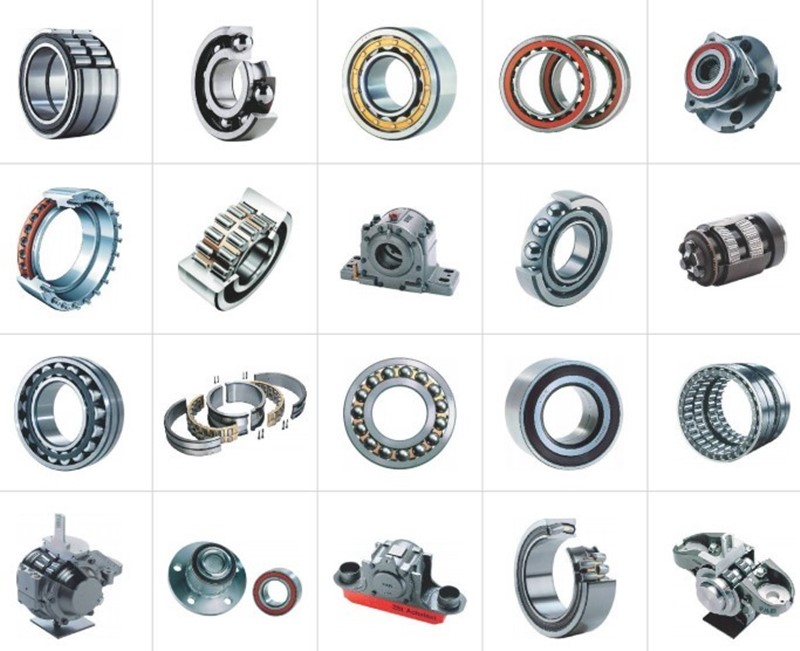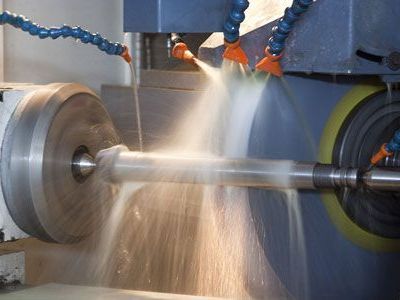Volution Bearing Fundamentals Explained
Volution Bearing Fundamentals Explained
Blog Article
The Only Guide for Volution Bearing
Table of ContentsThe Single Strategy To Use For Volution Bearing3 Easy Facts About Volution Bearing ShownVolution Bearing Fundamentals ExplainedVolution Bearing for Beginners
This is the quantity of time that a group of evidently similar bearings will finish or exceed prior to the development of an exhaustion spall. The fundamental formula for calculating bearing L10 ranking life is: where: C = Dynamic Capacity (dN or Pounds) P = Equivalent Bearing Lots (N or Lbs) N = Rotating rate in RPM e = 3.0 for ball bearings, 10/3 for roller bearings All round bearings, tapered roller bearings, and spherical roller bearings can taking a considerable axial drive tons.This calculation can be somewhat complicated as it depends upon the relative magnitudes of the radial and drive lots to each other and the call angle developed by the bearing. It would be as well challenging to reveal all the approaches of calculating P for all the bearing kinds revealed. For conical roller bearings, the "K" drive aspect is employed.
Radial round roller bearings that have opposing flanges on their inner and outer races have a minimal capacity of taking a drive load though the size of the rollers. It is so restricted that we do not recommend individuals purposefully do this. Acceptable thrust loading is using roller ends and flanges for periodic drive and locating objectives.
Lots of applications do not run at a continuous tons or rate, and to choose bearings for a particular ranking life in hours based on the most awful operating problem might confirm expensive (https://volutionbearings.bandcamp.com/album/volution-bearing). Frequently, a responsibility cycle can be specified for the various operating conditions (tons and rate) and the percentage of time at each
Volution Bearing Fundamentals Explained
In such instances, a complete duty cycle takes place within one revolution of the bearing. The two examples could be combined for several anticipated operating conditions with reciprocating activity and different height lots and speeds. Determining the score life when lots and speeds differ involves first calculating the L10 ranking life at each operating problem of the task cycle.
T1, T2, Tn = percentage of time at various problems, revealed as a decimal T1 + T2 + Tn = 1 Lp1, Lp2, Lpn = Life in hours for each and every period of consistent tons and speed When a bearing does not make a total turning yet oscillates back and forth in operation, a lower equivalent radial load can be calculated utilizing the formula below: Pe = Po x (/ 90)1/e where: Pe = comparable dynamic radial load Po = actual oscillating radial load = angle of oscillation, in degrees e = 10/3 (Roller Bearings) 3.0(Ball Brgs) Some applications produce very high radial and thrust loads, and it might not be physically possible or practical to utilize navigate to this website a solitary bearing that is qualified of taking both kinds of load.
When this happens, the equipment developer need to take care to make sure that the radial bearing takes just the radial lots, and the drive bearing takes only the thrust load. A great way to achieve this is to utilize a cylindrical roller bearing with one straight race at the "radial" place, as this bearing can not take any type of thrust.
One means to complete this is to make the fit of the outer races extremely loose in their housings: commonly.5 mm/.020 In. to 1.0 mm/.040 In. Life change aspects enable the original tools supplier to much better predict the real life span and reliability of bearings that you pick and set up in your equipment.
The Buzz on Volution Bearing
Life adjustment variables, a1, a2 and a3, can in theory be higher or much less than 1. manufacturing watkinsville ga.0, relying on their analysis. In the OEM's process of predicting the solution reliability of his/her equipment, it is sometimes essential to raise the integrity of the chosen bearings to predict a much longer imply time between failures
If a reduced worth for L10 is calculated with an a1 aspect, and it is not acceptable, then a bearing with better Dynamic Capacity needs to be selected. Integrity - % Ln a1 factor 90 L10 1.00 95 L5 0.64 96L4 0.55 97 L6 0.47 98 L2 0.37 99 L1 0.25 There have been numerous improvements in birthing style and manufacture over the years that have been shown in life examinations that cause boosted L10 ranking life.
Many bearing applications are far from lab problems. Consequently it can be difficult to justify an a3 element higher than 1.0. Conditions such as heat, contamination, exterior vibration, etc will result in an a3 aspect less than 1. If the lubrication is remarkable and the running speed high enough, a dramatically boosted lube movie can create in between the bearing's interior call surface areas validating an a3 aspect higher than 1.0.

What Does Volution Bearing Do?
The adhering to formula is utilized to calculate the System Score Life: L10sys = (L1-w + L2-w + Ln-w)-1/ w where L10sys = rating life for the system of bearings L1, L2, Ln = score life for the individual bearings in the system w = 10/9 for sphere bearings and w = 9/8 for roller bearings It has been picked up from experience that bearings require a minimal applied tons to guarantee traction for the moving components so they roll as the shaft starts to revolve. https://www.behance.net/jasonbrown108.

Report this page